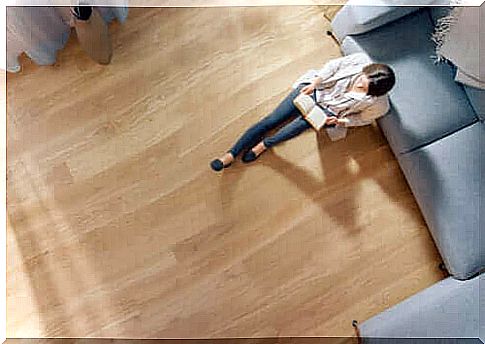Hardwood Floors: The Pros And Cons
Today’s article is about hardwood floors. As you already know, choosing the right topping is important as it requires a lot of maintenance. Here are some pros and cons of this type of material.

Hardwood floors have as many supporters as there are opponents. That’s because there are a number of drawbacks, most of which are associated with the maintenance required. But these floors are very beautiful, so you should know the advantages and disadvantages before making a decision so that you can make the right choice for your home.
In the following, we will deal with, among other things, ecological, aesthetic, technical and financial aspects of hardwood floors. This will help you make the right decision.
Benefits of hardwood floors
Wood is a material that attracts a lot of attention as it goes well with most interior styles. It also contributes to their attractiveness. However, there are other advantages that have distinguished wood over and over again for many decades. Read on to find out which ones they are!
1. Thermal insulation
Hardwood floors are great for cold climates because they have an enviable coefficient of thermal insulation. This means that they keep the warmth in the house, despite the low outside temperatures.
2. Longevity
The lifespan is long and can last for generations with proper treatment. The thickness of the floor is also proportional to its durability.
3. Hypoallergenic
Hardwood floors do not cause allergies as they repel dust, pollen and other substances that normally cause nasal problems. In other words, they don’t pick up any dirt and that makes cleaning easier.

4. Air purity
The quality of the air in apartments with hardwood floors increases. This can promote your well-being in both psychological and physiological ways.
5. Aesthetics
This type of flooring makes every room special. It enhances the room and creates an aesthetic environment for the rest of the furniture and accessories in the same room. In addition, its variety of designs and surfaces is exceptional.
Disadvantages of hardwood floors
The disadvantages of hardwood floors should also be addressed to determine their suitability for your home. Accordingly, we have compiled the most important disadvantages in this section.
1. Laying
You have to move it carefully. Every little mistake can cause various problems in terms of the durability of the parquet floor over the years. For this reason, it is best to contact a specialist in the field. This guarantees a professional execution.
2. Maintenance of hardwood floors
This material requires more maintenance than most other materials. This is because factors such as moisture, excessive sunlight, and scratches from contact with other objects affect the floor. For this reason, its maintenance requires regular effort.
3. The color changes over time
The flooring will lose color over the years. Especially when one area is more exposed to the sun than another. Unfortunately, this can lead to an undesirable change that may contradict your sense of perfection.
4th prize
This is one of the biggest limitations when choosing wood because the average price is usually more expensive. However, there are several ways to choose from, which increases the cost range. Without a doubt, a hardwood floor is a long-term investment.
5. Noise
Wood does not have the best sound insulation values. The noise often spreads in an undesirable way. There is a solution to this problem by using an extra layer of insulation, although it ends up being an extra expense.

Environmental benefits of hardwood floors
Felling trees is a destructive act. The truth, however, is that regulations force manufacturers to plant proportionally higher numbers of trees. At the same time, the energy costs for processing wood are much lower than for other materials such as concrete or plastic.
In addition, wooden floors reduce the carbon dioxide in the air, which reduces the greenhouse effect. In addition, the floors can be recycled later.
Hardwood floors are not a choice that is taken lightly
They are an excellent option for people who are ready to make a big investment, as well as doing regular maintenance and taking all preventive measures so that the soil is not damaged by moisture or sunlight.
Now that you know the pros and cons, the next step is to research the area where you want to install the floor and assess the feasibility based on the intended use.
In short, don’t take your home flooring choices lightly, because it’s designed to last a lifetime. Get good advice in the shop too!









